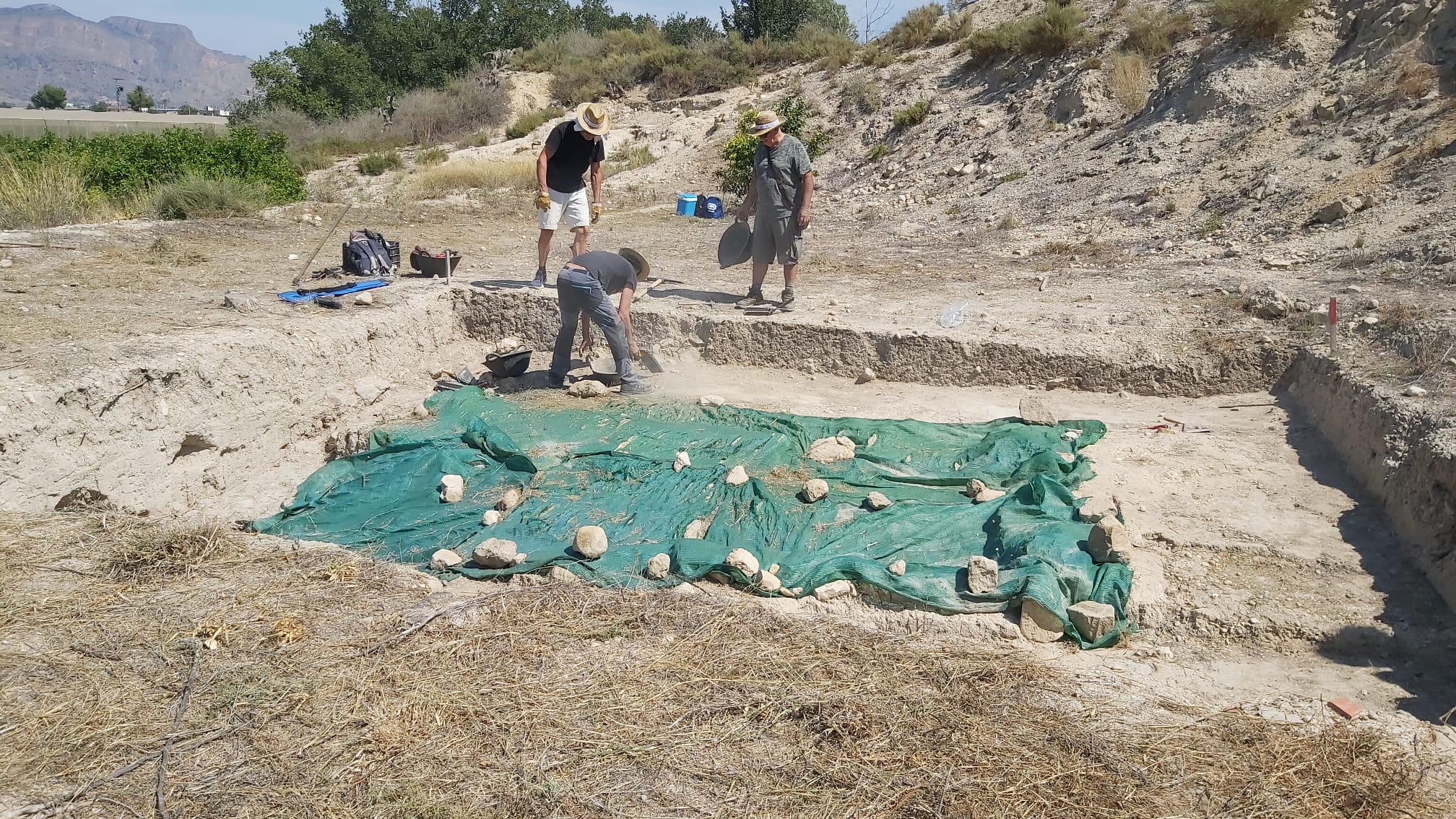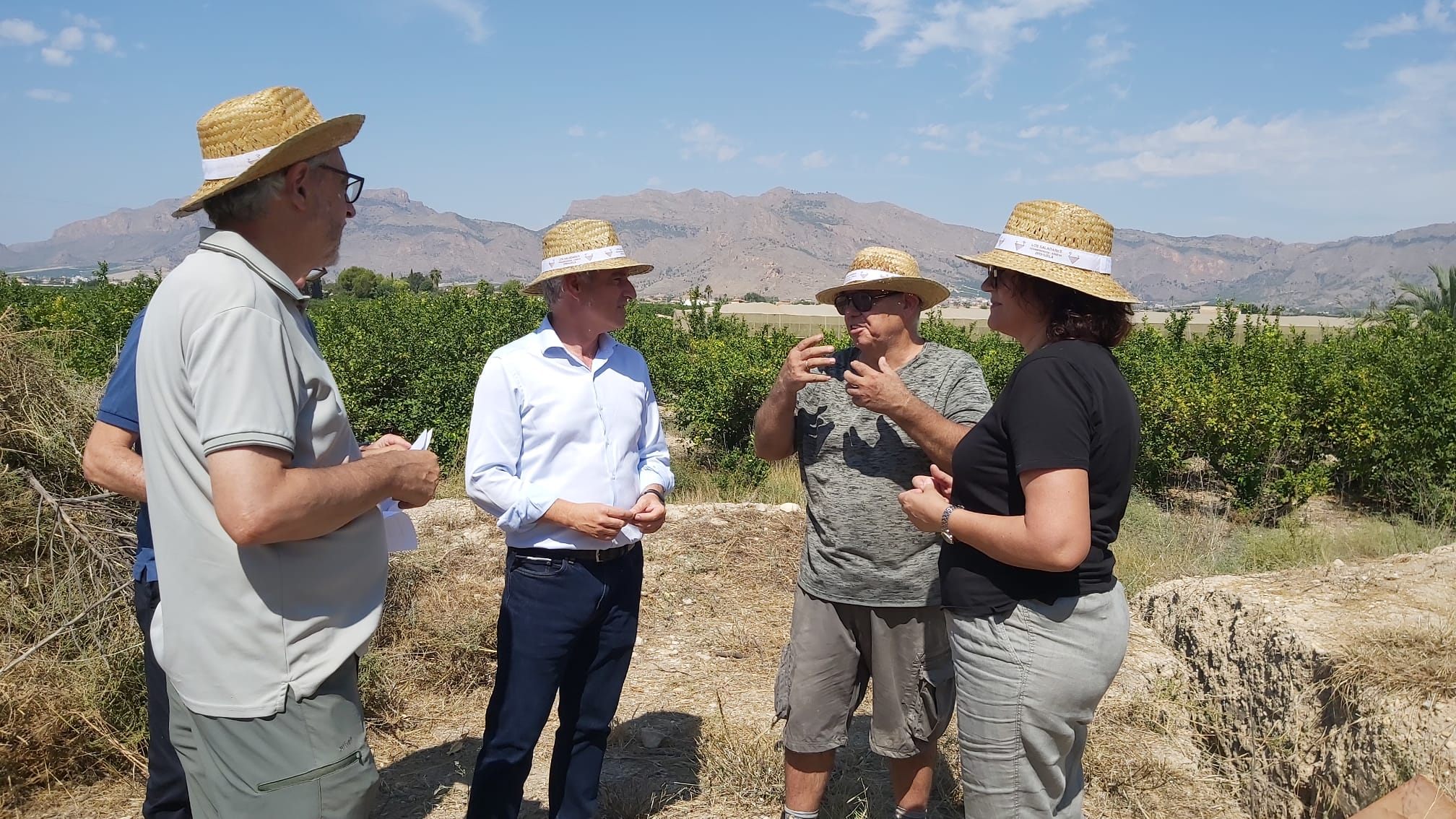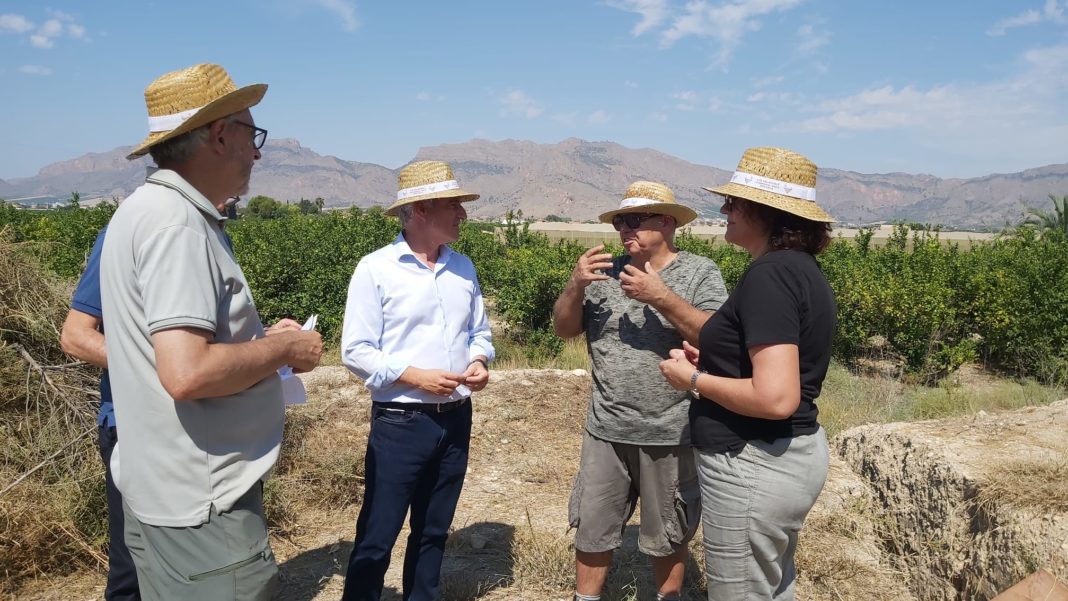Orihuela has resumed the second phase of the excavations that are part of the Archaeological research project at the Los Saladares site, in the foothills of the Sierra de Hurchillo
The Councilor for Historical Heritage, Matías Ruiz, said that “we are in an enclave that not only has archaeological wealth, but is also landscaped. Los Saladares has truly significant landscape and fauna around the area”.
Meanwhile, the mayor, Pepe Vegara, advocated the opening of the site for all Oriolanos, because “finding part of our origins is finding part of ourselves.”
Thus, he said that the Council’s intention is to renew the agreement with the University of Alicante for “a new research project which will be opened to the public through arranged visits.” In fact, once this second phase of excavation is completed, there will be open days so that the public can visit.
Vegara was accompanied on a visit to the site by several councillors, where they met the researcher and professor from the University of Alicante, Alberto Lorrio, along with the municipal archaeologist, María del Carmen Sánchez, and the retired archaeologist Emilio Diz Ardid.
Los Saladares is a site of cultural interest (BIC) that was acquired by the Council in 2019. It is one of the main protohistoric towns in the southeast and east of the Iberian Peninsula, 9th to 3rd centuries BC, which was a milestone in research into the origins of Iberian culture. This emblematic site was already the subject of excavation between 1971 and 1973 by O. Arteaga and Mª R. Serna.
In this second phase, the work will focus on the consolidation of a large building belonging to the ancient Iberian period, provisionally dated to the beginning of the 5th century, and the excavation of a possible footing and the foundation pit to document its initial chronology. They will also complete the restoration of a Late Bronze house.







